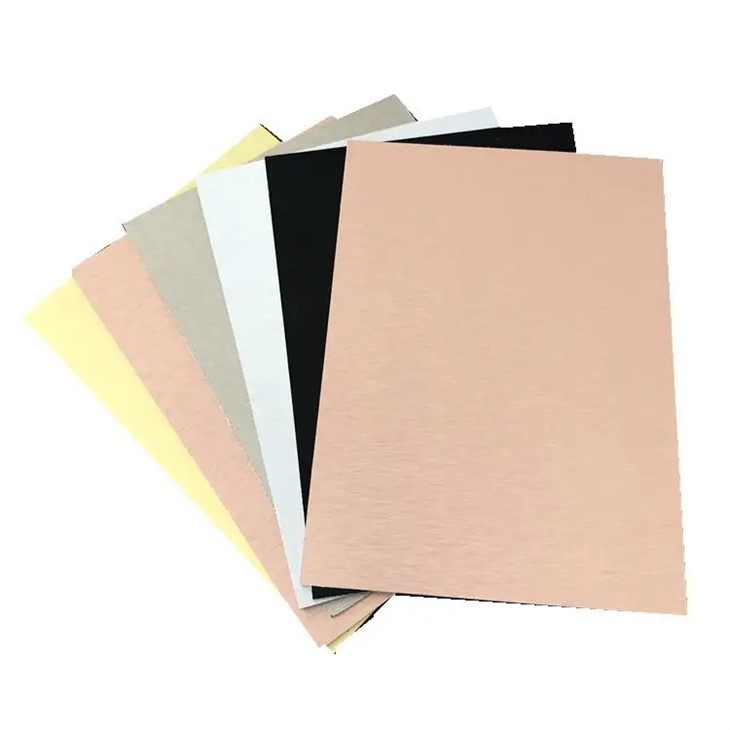Hey there! As a supplier of aluminum composite ACM, I often get asked about the flexural modulus of aluminum composite ACM. So, I thought I'd take a moment to break it down for you.
First off, let's talk about what flexural modulus actually means. In simple terms, flexural modulus is a measure of a material's stiffness when it's being bent. It tells you how much a material will bend under a certain amount of force. The higher the flexural modulus, the stiffer the material and the less it will bend.
Now, when it comes to aluminum composite ACM, the flexural modulus is an important property. Aluminum composite panels (ACPs) are made up of two aluminum sheets bonded to a core material, usually a polyethylene or mineral-filled core. The flexural modulus of the ACM is influenced by both the properties of the aluminum sheets and the core material.
The aluminum sheets used in ACMs typically have a high flexural modulus on their own. Aluminum is a strong and stiff material, which gives the ACM some inherent stiffness. The thickness and alloy of the aluminum sheets can also affect the flexural modulus. Thicker aluminum sheets generally result in a higher flexural modulus, as they can resist bending more effectively.
The core material also plays a crucial role. A polyethylene core, for example, is relatively flexible compared to the aluminum sheets. However, it still contributes to the overall structure and can influence the bending behavior of the ACM. Mineral - filled cores, on the other hand, are often stiffer than polyethylene cores, which can increase the flexural modulus of the ACM.
So, why does the flexural modulus matter? Well, in applications like exterior wall cladding, you want a material that can withstand wind loads and other external forces without excessive bending or deformation. A higher flexural modulus means the ACM will be more rigid and better able to maintain its shape over time. This is especially important for large - scale building projects where the panels need to cover large areas and be exposed to various environmental conditions.
For interior decoration, the flexural modulus can also be significant. If you're using ACM for partitions or decorative elements, you want a material that can be shaped and installed easily while still maintaining its structural integrity. A suitable flexural modulus allows for some flexibility during installation, making it easier to work with the panels.
If you're interested in our products, we have a wide range of options available. Check out our Easy Install Aluminum Composite Panel Exterior Wall Advertising Manufacturers page. These panels are not only easy to install but also have good mechanical properties, including an appropriate flexural modulus for exterior applications.


Our Aluminium Composite Material Bendable For Building Project/ Interior Decoration is another great choice. It offers a balance between flexibility and stiffness, making it suitable for both building projects and interior decoration.
And if you're looking for top - quality ACM at a great price, head over to our Top Quality ACP/ACM Aluminum Composite Panel Price page. We offer high - performance panels with a flexural modulus that meets industry standards.
When it comes to measuring the flexural modulus of aluminum composite ACM, there are standard testing methods. One common method is the three - point bending test. In this test, a sample of the ACM is placed on two supports and a load is applied at the center. By measuring the deflection of the sample under the load, the flexural modulus can be calculated using specific formulas.
It's also important to note that the flexural modulus can vary depending on the direction of the load. Aluminum composite panels may have different flexural moduli in the longitudinal and transverse directions. This is due to the manufacturing process and the orientation of the materials within the panel.
As a supplier, we ensure that our ACM products are tested thoroughly to meet the required flexural modulus specifications. We work with high - quality materials and use advanced manufacturing techniques to produce panels with consistent and reliable mechanical properties.
If you're in the market for aluminum composite ACM, whether it's for a new building project, interior renovation, or advertising signage, we'd love to hear from you. Our team of experts can help you choose the right product based on your specific requirements, including the desired flexural modulus.
Don't hesitate to reach out to us to start a conversation about your procurement needs. We're here to provide you with the best solutions and ensure that you get the most suitable aluminum composite ACM for your project.
In conclusion, the flexural modulus of aluminum composite ACM is a key property that affects its performance in various applications. Understanding this property can help you make informed decisions when selecting ACM for your projects. Whether you need a stiffer panel for exterior walls or a more flexible one for interior decoration, we have the products to meet your needs.
References
- ASTM D790 - Standard Test Methods for Flexural Properties of Unreinforced and Reinforced Plastics and Electrical Insulating Materials
- ISO 178 - Plastics - Determination of Flexural Properties